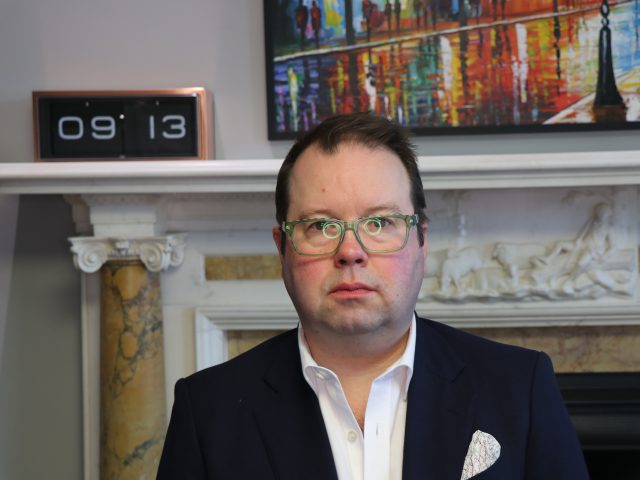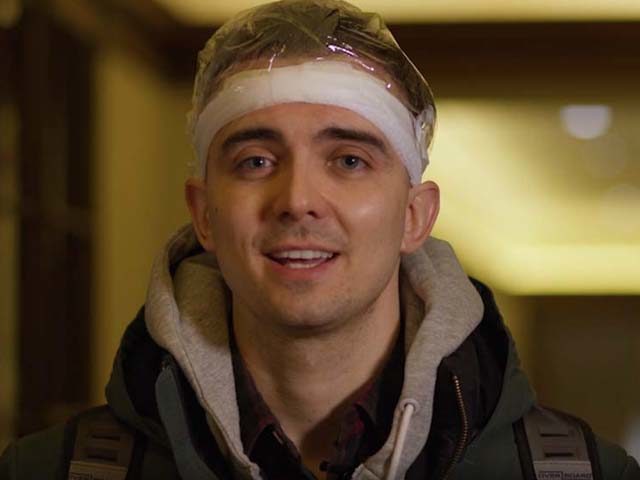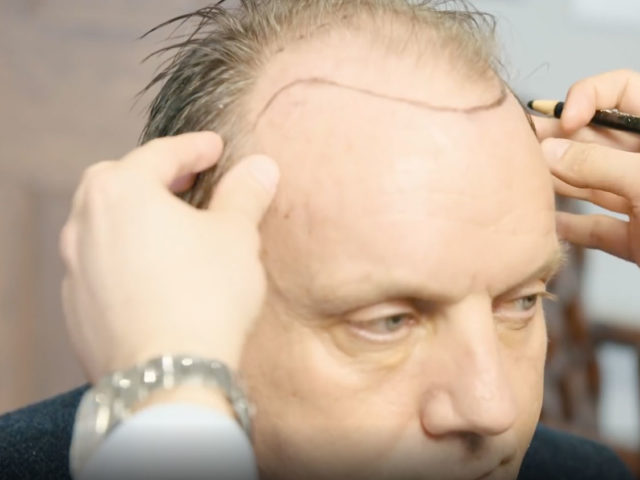The one thing most men seem comfortable talking about, when it comes to their appearance, is their hair – or lack thereof. But only up to a point. We’re allowed to point out that it’s thinning, greying or gone altogether. But suggest a cure and everyone looks a little uneasy.
I was at a dinner party recently and the men, mostly spurred on by their wives, admitted that they had googled hair transplants; the host even fetched a can of spray-on hair, to everyone’s amusement (it looked like Fuzzy-Felt). But when I asked if any of them were taking medication, they all said no. That is medication, which works by reducing dihydrotestosterone (DHT) levels in the scalp – the hormone contributes to male pattern baldness – and helps to reverse the hair loss by decreasing the effect of DHT on the hair follicles. They weren’t taking it despite the fact that in the US alone there have been nearly ten million prescriptions, including one for President Trump.
I have been taking medication for hair loss for about ten years after noticing (actually, someone else noticing) that my crown was getting a little threadbare. Fortunately, it halted the process and I’ve held on to my hair well into my fifties. With that in mind, I was a little put out when my editors suggested I visit Christopher D’Souza, one of Harley Street’s top hair transplant surgeons – if only to interview him, they quickly pointed out.
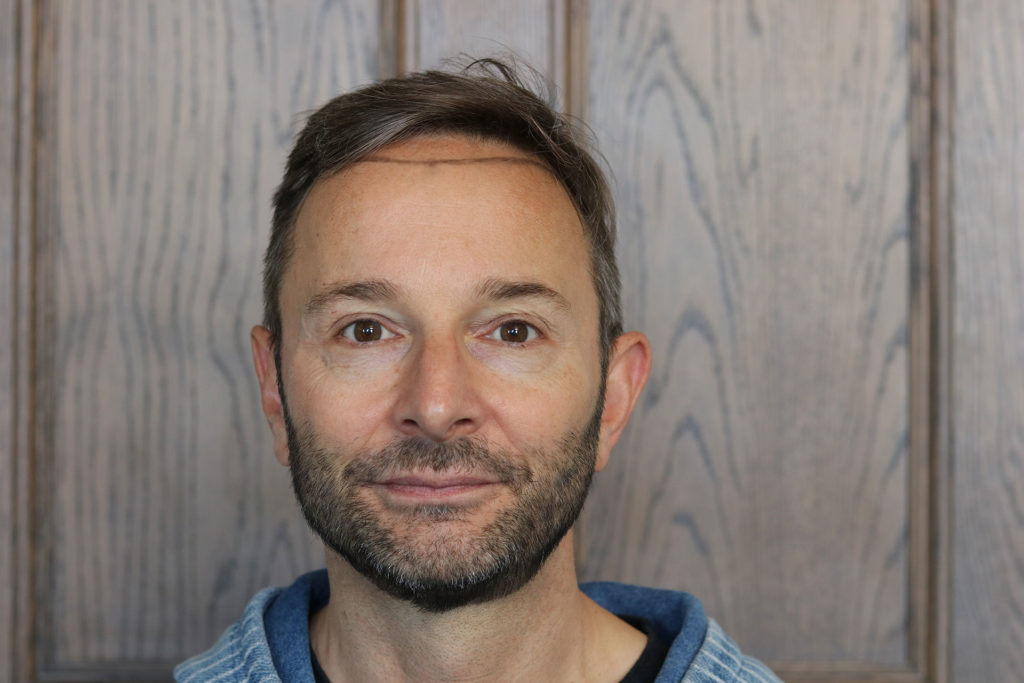
Unexpectedly, the procedure was painless. A local anaesthetic was used and I honestly didn’t feel a thing
The thought of a hair transplant can be quite intimidating: the cost, the pain, the time off work, how long to wait before having one, where to get it done. Go online and there are myriad stories and pictures of successes and failures, disastrous trips to Turkey and an endless fascination with celebrities who may or may not have had one. With up to 80 per cent of Caucasian men subject to male pattern baldness, it’s a big business. Many men, of course, look perfectly good bald or with close-cropped hair; others less so. I once shaved off my hair and my ex-wife was so shocked at how awful I looked that she walked straight into the glass door of a café.
The D’Souza Clinic
D’Souza, a warm, friendly man with normal-looking hair – always a comfort – talked about the concerns that men typically face when considering a hair transplant, which he readily admits can be a bewildering process. Ultimately, there are two types of surgery. The first is follicular unit transplantation (FUT), also known as strip surgery because it involves taking a thin strip of skin with intact hair follicles from the “safe” or “permanent” zone at the back and sides of the head (preferable if larger graft numbers need to be achieved). The second, follicular unit extraction (FUE), involves extracting follicles individually from the back and sides of the head. This is perhaps a less invasive procedure, although patients need to have the back and sides of their head shaved and the density of hair in the donor region will obviously decrease.
I asked D’Souza to give his expert opinion on my hairline. Rather more quickly than I hoped, he pointed out that my hairline was now quite high (despite my having a fringe) and that in an ideal world I would bring it forwards an inch or so. He reached for a marker pen and drew an outline of how it could look.
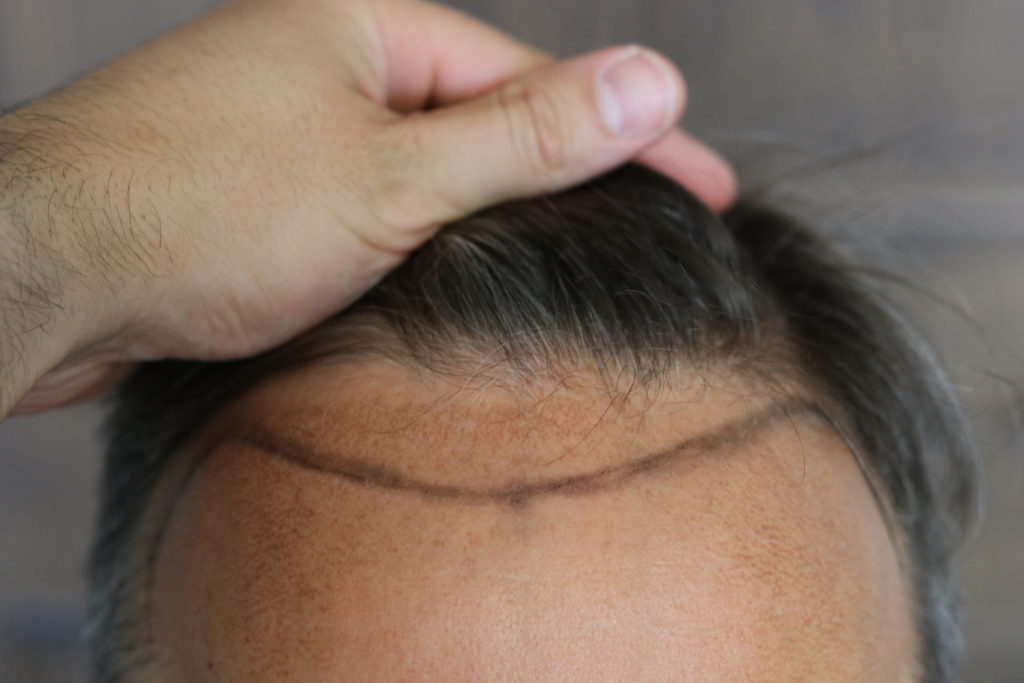
Ah, the perils of seeing what could be. Three months later I was back in his clinic, sitting in the chair, about to undergo an FUE or, as I like to think of it, a hairline refresh.
This is one of the most worthwhile aesthetic fixes I have tried.
The Day of Surgery
Unexpectedly, the procedure was painless. A local anaesthetic was used and I honestly didn’t feel a thing. The only thing that hurt was watching the hair being shaved off the back and sides of my head. I looked like Kim Jong-un (or Kim Old-un, as a friend kindly pointed out). The transplant took about seven hours, so I was put in front of large TV screen and watched the first season of Peaky Blinders while devouring a large bag of Haribo. For D’Souza and his technicians, however, the process was quite intense. First, he removed the follicles from the back and sides of my head one by one – 1,792 of them, in my case. The follicles were trimmed, counted and sorted under the microscopes. He cut tiny incisions where the follicles were to be placed (again, I felt nothing, but the dull crunch-like sounds were a little off-putting) and then in each one went. It was incredibly labour-intensive.
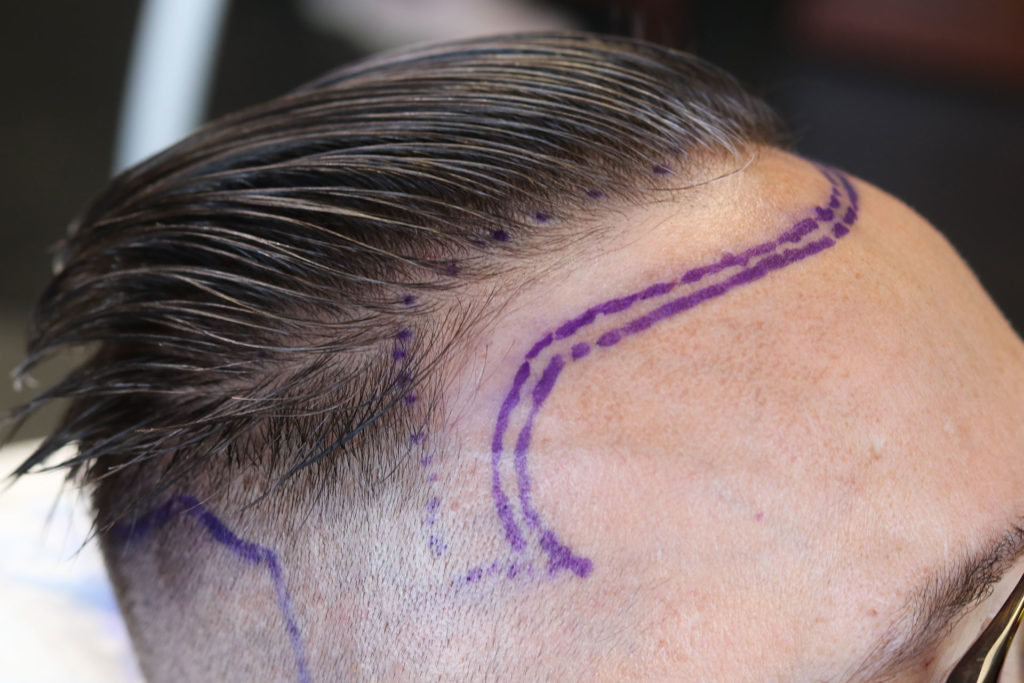
At the end of the procedure I’ll admit that I wasn’t looking my best. My head was mostly shaved, the recipient area was a little bloody and swollen, and I had cling film on my forehead to prevent infection during the taxi ride home. But there, peering out at me, was my new hairline made up of follicles that hours before had resided elsewhere.
Aftercare
The trickiest part of the process is the aftercare. You will need to take a week, ideally two, off work. I booked my operation at the start of a fortnight’s holiday in August. Initially, you need to protect yourself from infecting the areas that were operated on, be extremely careful with the fragile new grafts (you use a neck pillow at night so you don’t rest on them), take painkillers and anti-inflammatory medication for a few days, and regularly use a saline solution to keep the grafts moist. It’s pretty full-on for the first five days, but manageable. I even had friends to stay during this time, although you have to avoid alcohol. After about a week it all calmed down and, aside from a severe short back and sides, there was little clue to what I had undergone. Two weeks later and I was back at work. The hair at the back of my head had grown enough to hide where the follicles had been removed, and my fringe hid the small new ones nestled at the top of my forehead.

Slightly worryingly, after two to three weeks the transplanted follicles fell out. But that’s normal; it then takes about three months for the new hairs to start to push through. Now, six months on, the new growth is pretty impressive and, although shorter, beginning to meld in with the hair I already had on top. D’Souza says it takes about 12 to 18 months for it to fully grow in length and density.
This is one of the most worthwhile aesthetic fixes I have tried. My hairline, while rejuvenated, doesn’t look incongruously youthful. And if I hadn’t been so impressed with the results that I will tell anyone who will listen about it, I could perhaps have got away without anyone knowing what I’d had done.
I wish more of the men who lament the loss of their hair could know how easily, if you’ve got the cash (between £4,000 to £9,000 depending on the number of grafts), getting some of it back again can be. I was lucky enough to visit one of the country’s top practitioners and the area being restored was relatively small. But if you choose your surgeon carefully (ideally you should rely on a personal recommendation), are realistic about what can be done and what will suit you, then you too should have an outcome you’re happy with.
Since my transplant two friends have booked in for theirs. Putting up with a couple of weeks of inconvenience after a transplant definitely beats the thought of a lifetime of spray-on hair or Trump-like styling techniques.
Full article: https://www.thetimes.co.uk/article/jeremy-langmead-on-why-more-men-should-try-a-hair-transplant-vv6nwt2sr
Christopher’s Comments
Jeremy presented with a history of slow progressive hair loss over the last 10-15 years. He had already started medication to stabilise his hair, but was concerned with the recession of the hairline and loss in the temples.
How was the surgery?
We discussed all treatment options and decided to continue medication and restore the hairline and temples with FUE hair transplant surgery. We placed a total of 1792 grafts, with an average of 2.23 hairs per graft. 1 haired grafts are used to rebuild the hairline and 2/3 haired grafts to build up the density behind.
I last saw Jeremy at 6 months post-op and was very pleased to see such good growth at an early stage. I would expect the overall appearance to improve up to 18 months post-op.
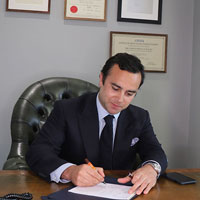
Mr. Christopher D’Souza MBBS MSc MRCS
Hair Transplant Surgeon & Medical Director
Talk to your Surgeon about your hair loss
Call us +44 (0) 207 770 6538
Mr D’Souza personally leads each new patient call and consultation.
What’s involved at a consultation?.



